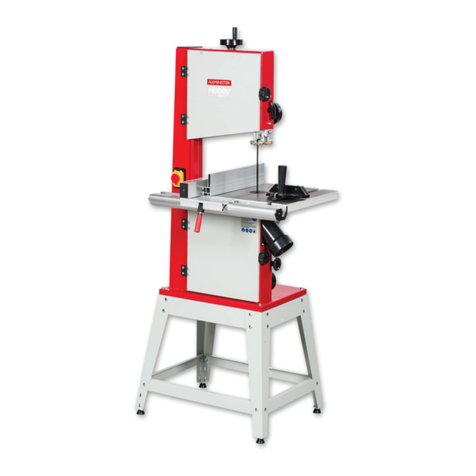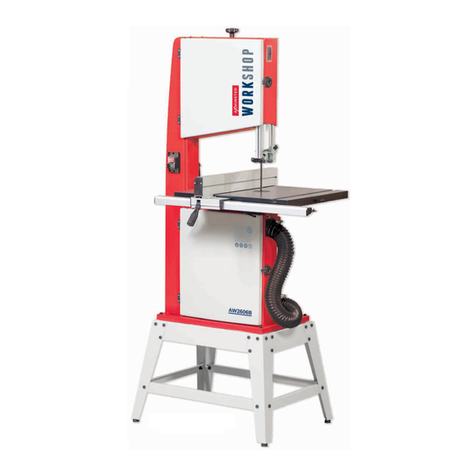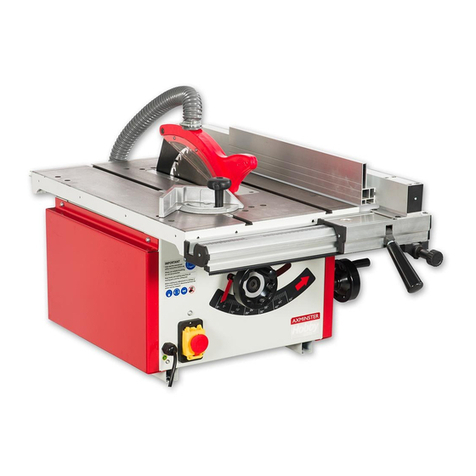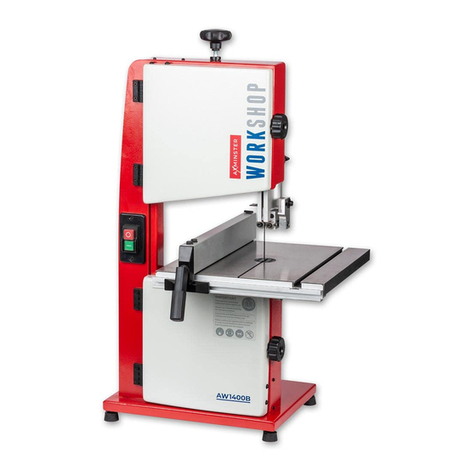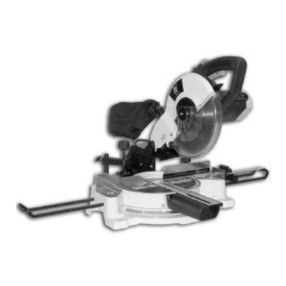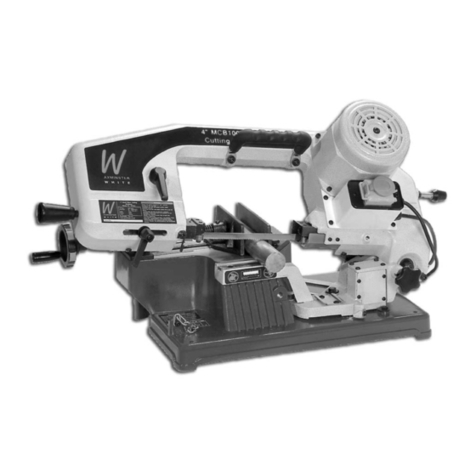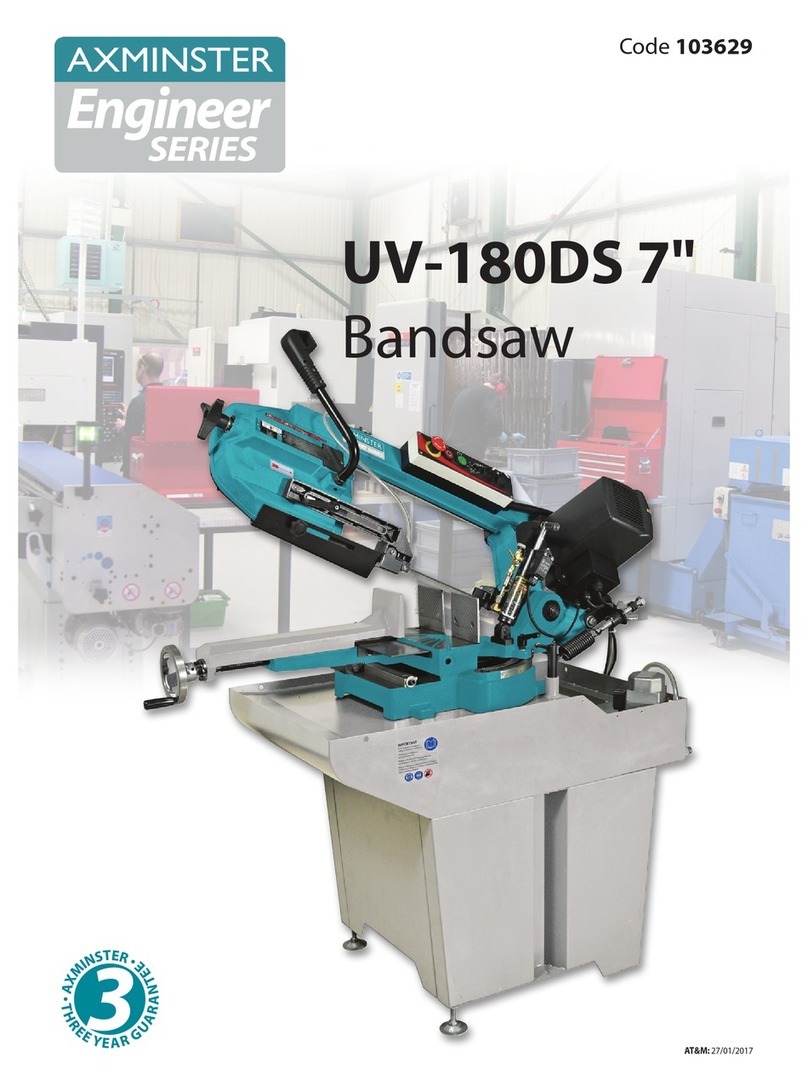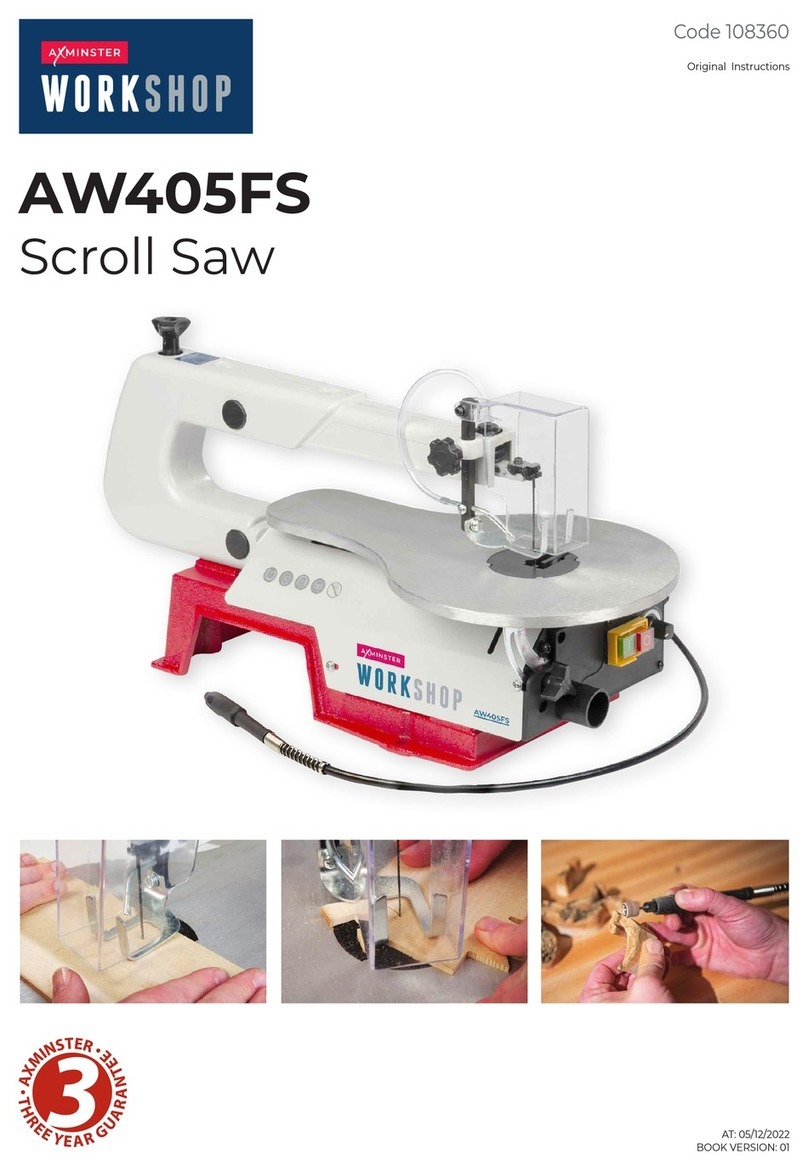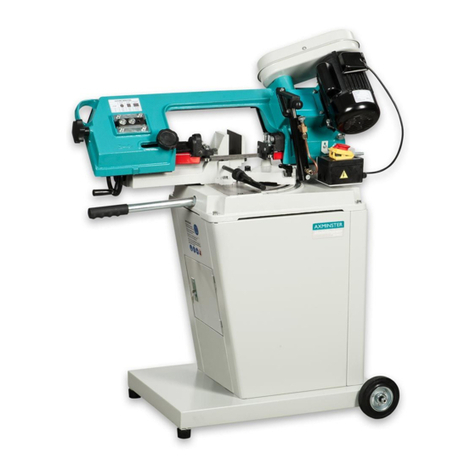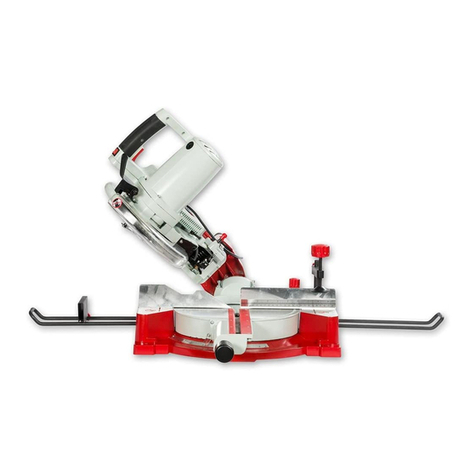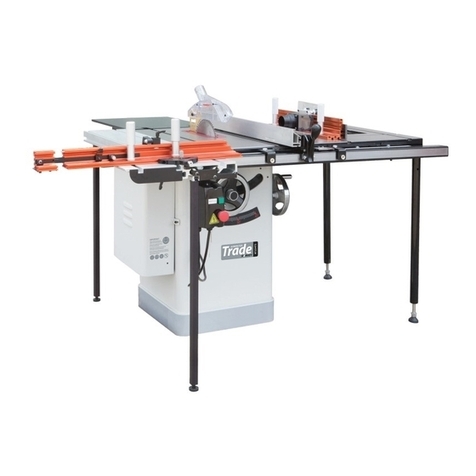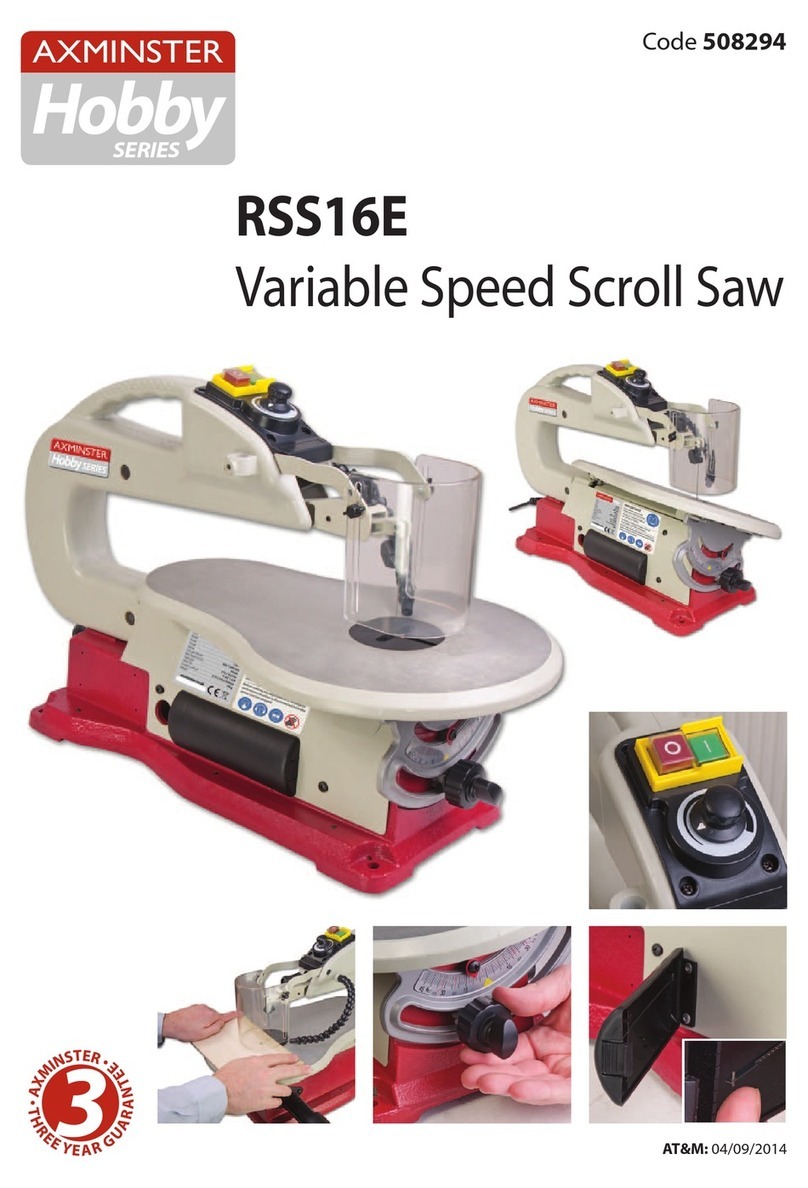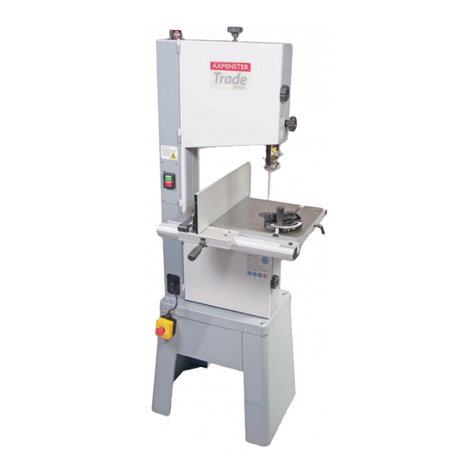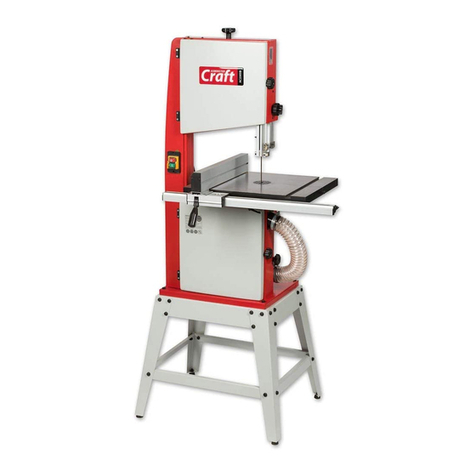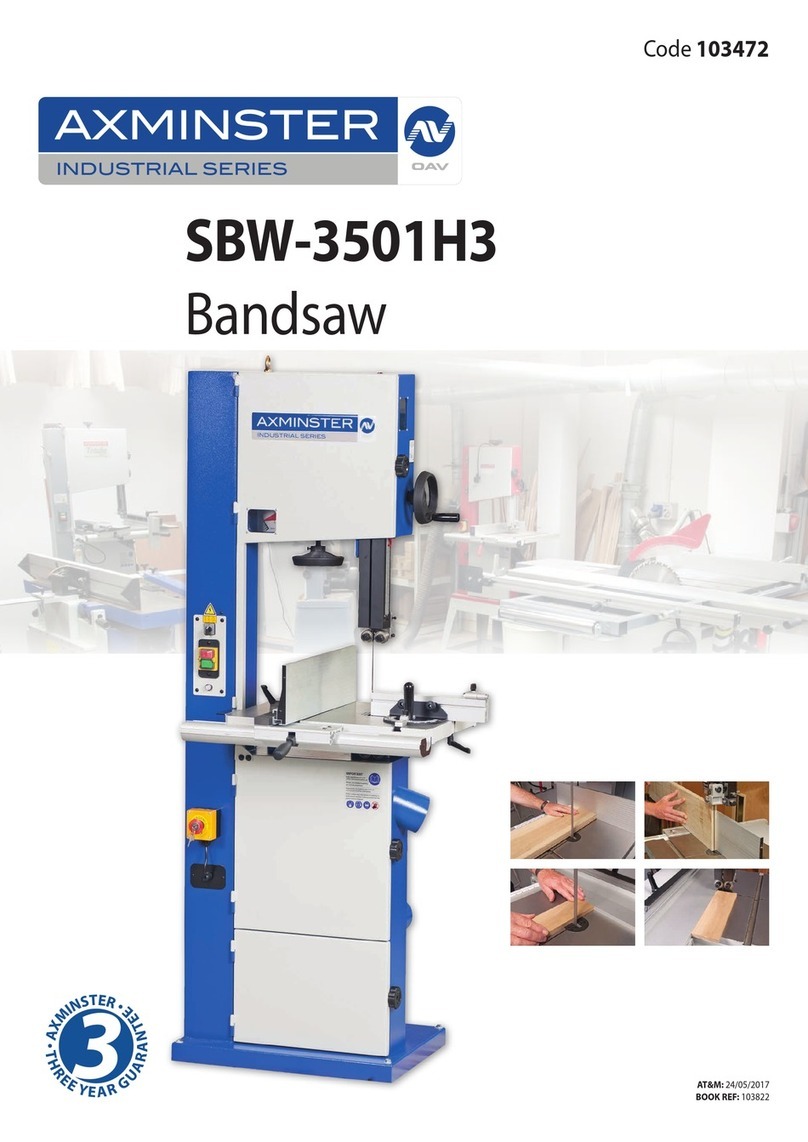
Nolist ofsafetyguidelines can be complete.
Everyshop environment isdifferent. Always
considersafetyfirst, as it applies toyour
individualworkingconditions. Use thisand
othermachinerywithcautionand respect.
Failuretodo socouldresultinserious
personalinjury, damage toequipment, orpoor
workresults.
Additional SafetyInstructions forPanel
Saws
1. SAFETYACCESSORIES. Always usetheblade
guard and riving knifeon all''through-sawing''
operations.Through-sawing operationsare those
when the blade cutscompletely through the work-
piece.
2. KICKBACK. Befamiliar withkickback.Kickback
happens when the work-pieceis throwntowards the
operator at ahigh rateofspeed.Until you havea
clear understanding ofkickback and howit occurs,
DONOT operatethistablesaw!
3.WORKPIECE CONTROL. Makesure the work-piece
is placed inastablepositionon thetableandis
either supportedbythe ripfenceorthe crosscut
tableduring cutting operations.
4. PUSHSTICK. Always useapushstick when ripping
narrowstock.
5. OPERATORPOSITION. Never stand orhaveany
part of your bodydirectly in-line withthecuttingpath
of thesawblade.
6. REACHINGOVERSAWBLADE. Never reachbehind
or over the blade witheither hand whilethe sawis
running. If kickbackoccurswhilereaching over the
blade, handsor armscouldbepulled intothe
spinning sawblade.
7. USINGTHE RIPFENCEAND THE CROSSCUT
FENCETOGETHERDURINGACUTTING
OPERATION. When using thecrosscutfence,the
work-pieceshouldnever be contactingthe ripfence
whilethe sawblade is cutting.
8. STALLEDBLADE. Turn the saw off before
attempting to"free" astalled sawblade.
9. COMFORTABLE CUTTINGOPERATIONS. Avoid
awkward operations and hand positionswhere a
sudden slipcouldcauseyour hand tomoveintothe
spinning sawblade.
10. EXPERIENCINGDIFFICULTIES. If at any timeyou
are experiencing difficulties performing theintended
operation,stop using the machine! Contact your
agent.
11. BLADE HEIGHT. Always adjustthe blade tothe
proper height abovethe work-piece.
12. DAMAGEDSAWBLADES. Never usebladesthat
havebeen dropped or otherwisedamaged.
13. RIVINGKNIFEALIGNMENT. Onlyoperatethesaw
ifthe riving knifeis alignedwiththemainblade.
Like all machines thereisdangerassociated
withthisSliding Panel Saw.Accidentsare
frequentlycaused bylack of familiarityor
failuretopayattention. Use thismachinewith
respectand cautiontolessenthe possibilityof
operatorinjury. If normal safetyprecautions
areoverlookedorignored, serious personal
injurymayoccur.
Statisticsprovethatmost common accidents
among tablesawuserscanbe linked to
kickback. Kickback istypicallydefined as the
high-speed expulsion ofstock from thetable
sawtowarditsoperator.Inaddition tothe
dangerof the operatororothersinthearea
being struck bythe flying stock, it isoften the
case that theoperator'shands arepulled into
the bladeduringthe kickback.
Preventing Kickback
Never attemptfreehand cuts.Ifthework-pieceisnot
fed perfectlyparallelwiththeblade, akickback will
likelyoccur.Always usethe ripfenceor crosscut
fencetosupportthe work-piece.
Makesure the riving knifeis always alignedwiththe
blade. A misalignedriving knifecancausethework-
piecetobind orstop the flowofthecut, resulting in
an increasedchanceofkickback.If you thinkthat
your riving knifeisnotaligned withthe blade,check
it immediately!
Ensure that your tableslides parallelwiththe blade;
otherwise, the chancesofkickback are extreme.
Takethe timetocheckand adjust the sliding table.
Usetheriving knifeduring everycut. The riving
knifehelps maintainthe kerfinthework-pieceafter
it iscut, therefore,reducing the chanceofkickback.
Feed cutsthrough tocompletion.Anytimeyou stop
feeding awork-piecethatisinthe middleofacut,
the chanceof binding, resultinginkickback, is
greatlyincreased.
Protecting Yourself fromKickback
Evenifyou know howtopreventkickback,itmay
stillhappen.Herearesometipstoreduce the
likelihood ofinjuryifkickback DOESoccur:
Stand tothe side oftheblade during everycut.If a
kickbackdoesoccur,the thrown
Work-pieceusually travels directlyinfront of the
blade.
Always wear safetyglasses or afaceshield.Inthe
event of akickback,your eyes andfaceare the most
vulnerablepart of your body.
Never, for anyreason,placeyour hand behind the
blade. Shouldkickback occur, yourhand will be
pulled intothe blade.
Useapushsticktokeep your handsfarther away
fromthe moving blade.Ifakickbackoccurs,the
pushstick will mostlikely takethe damagethatyour
hand wouldhavereceived.
